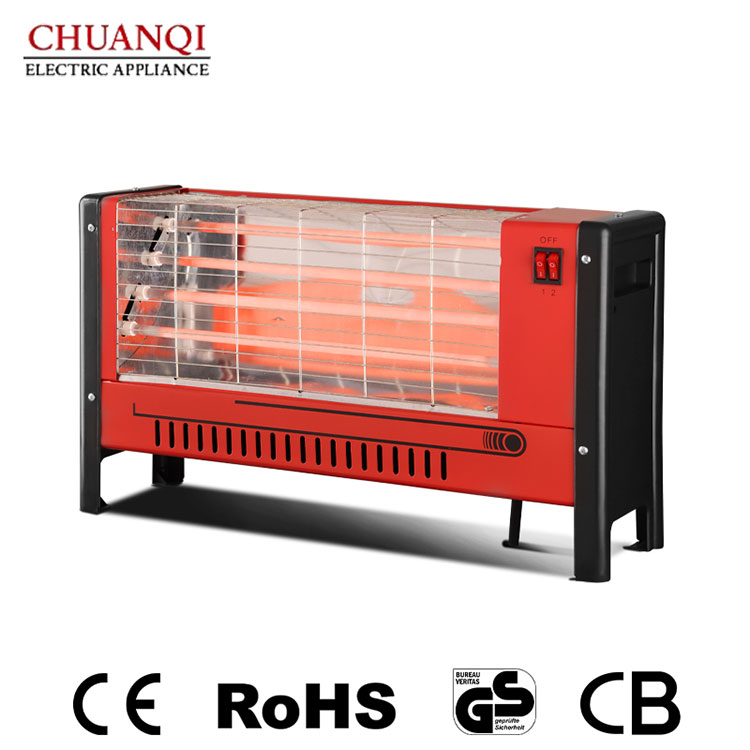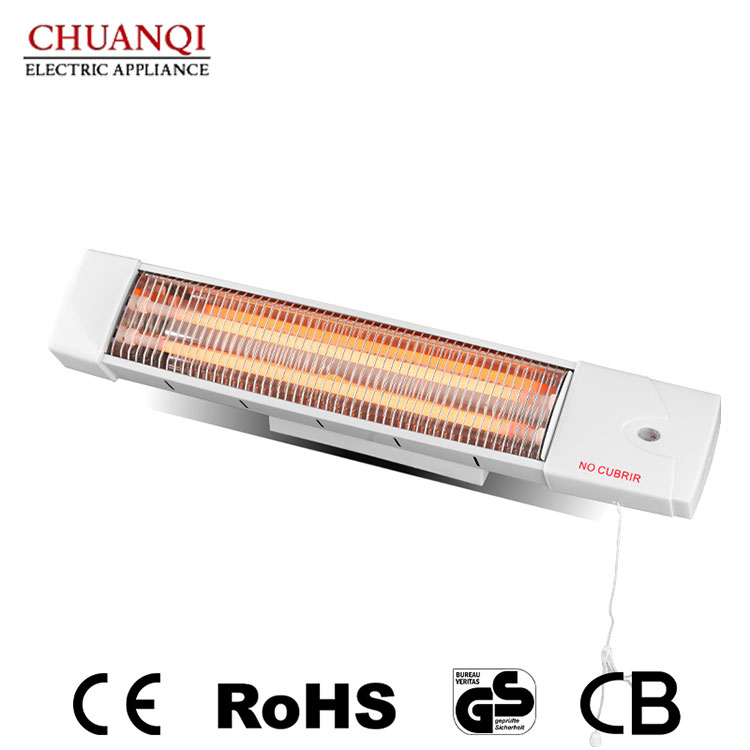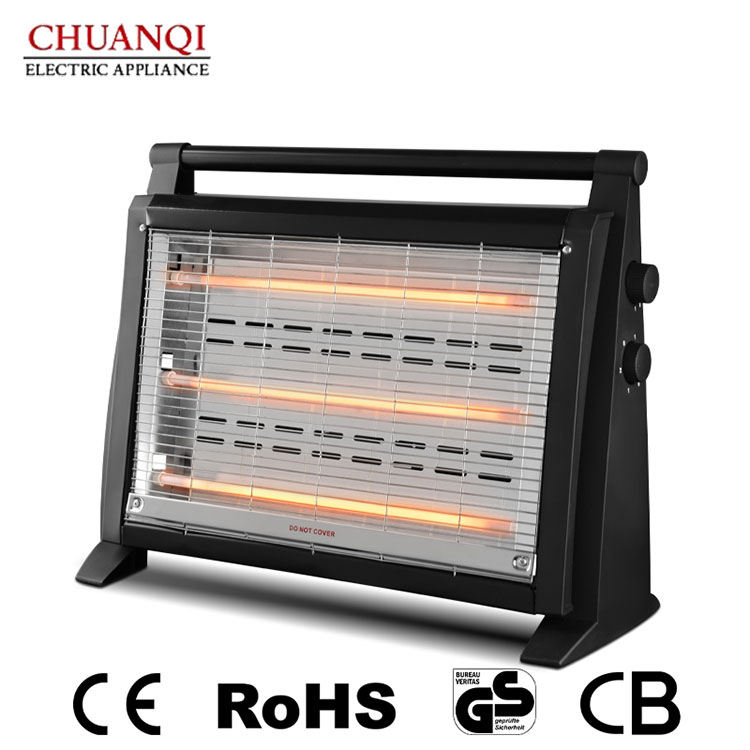- English
- 简体中文
- Español
- Português
- русский
- Français
- 日本語
- Deutsch
- tiếng Việt
- Italiano
- Nederlands
- ภาษาไทย
- Polski
- 한국어
- Svenska
- magyar
- Malay
- বাংলা ভাষার
- Dansk
- Suomi
- हिन्दी
- Pilipino
- Türkçe
- Gaeilge
- العربية
- Indonesia
- Norsk
- تمل
- český
- ελληνικά
- український
- Javanese
- فارسی
- தமிழ்
- తెలుగు
- नेपाली
- Burmese
- български
- ລາວ
- Latine
- Қазақша
- Euskal
- Azərbaycan
- Slovenský jazyk
- Македонски
- Lietuvos
- Eesti Keel
- Română
- Slovenski
- मराठी
Is Quartz Heat Resistant and What Makes It Ideal for Modern Heating Solutions
2025-10-30
As someone who has worked in the heating industry for many years, I’ve seen how the demand for durable and efficient materials continues to grow. When we at Chuanqi developed our Quartz Heater series, one of the most common questions customers asked was simple but important: Is quartz really heat resistant?
In this article, I’ll answer that question in detail, sharing not just the science behind quartz’s thermal properties, but also the product parameters and design standards that make our heaters perform reliably in even the toughest conditions.
Article Overview
-
What makes quartz heat resistant
-
How does quartz compare to other heating materials
-
What are the main types of quartz heaters
-
What are the technical parameters of our products
-
How do you choose the right quartz heater
-
What safety precautions should you consider
-
Frequently asked questions (FAQ)
What Makes Quartz Heat Resistant
Quartz is a crystalline form of silicon dioxide (SiO₂), known for its excellent thermal stability. It can withstand extremely high temperatures without deforming or melting—up to 1,100°C (2,012°F) for short-term exposure and around 1,000°C (1,832°F) for continuous use.
The reason lies in its atomic structure. The strong silicon-oxygen bonds make quartz highly resistant to thermal shock and rapid temperature changes. That’s why it’s commonly used not only in Quartz Heaters, but also in laboratory glassware, lighting systems, and industrial furnaces.
Key Thermal Properties of Quartz:
| Property | Description | Value |
|---|---|---|
| Melting Point | The temperature at which quartz changes to liquid | ~1,710°C (3,110°F) |
| Continuous Operating Temperature | Maximum safe working range | Up to 1,000°C (1,832°F) |
| Thermal Conductivity | Rate at which heat passes through the material | 1.4 W/m·K |
| Coefficient of Thermal Expansion | Resistance to cracking during heating/cooling | 0.55 × 10⁻⁶ /°C |
| Thermal Shock Resistance | Ability to withstand sudden temperature changes | Excellent |
This combination of properties explains why quartz remains structurally stable where most metals, ceramics, or glass would fail.
How Does Quartz Compare to Other Heating Materials
From years of customer feedback, I’ve learned that people often compare quartz to ceramic or metal heating elements. Each has its place, but quartz offers a unique balance between efficiency, safety, and performance.
| Material | Heat Resistance | Warm-up Speed | Lifespan | Cost | Best For |
|---|---|---|---|---|---|
| Quartz | Excellent (up to 1000°C) | Very Fast | Long | Medium | Space heating, industrial drying |
| Ceramic | Good (up to 800°C) | Moderate | Long | Medium | Household appliances |
| Metal (Nickel-Chrome) | Moderate (up to 600°C) | Fast | Medium | Low | Toasters, electric stoves |
| Carbon Fiber | Excellent (up to 1200°C) | Very Fast | Long | Higher | Infrared heaters |
In real-world use, quartz strikes the perfect balance: high radiant efficiency, rapid heating, and visual safety (the red glow allows easy monitoring).
What Are the Main Types of Quartz Heaters
At Chuanqi, we manufacture several categories of Quartz Heater systems to meet different application needs.
| Type | Description | Ideal Use |
|---|---|---|
| Infrared Quartz Tube Heater | Uses quartz tubes to emit radiant heat quickly and evenly. | Space heating, drying, workshops |
| Halogen Quartz Heater | Combines halogen gas and quartz glass for faster heat transfer. | Portable room heaters, office use |
| Quartz Panel Heater | Flat heating surface made from quartz glass. | Residential wall-mounted heating |
| Industrial Quartz Heater | Custom-designed for factories or drying lines. | Textile, paint, food processing industries |
Each type is engineered for optimal safety, consistent performance, and energy efficiency.
What Are the Technical Parameters of Our Quartz Heater
Below is a detailed specification overview of our standard models:
| Model | Power Range | Voltage | Tube Diameter | Surface Temp. | Heating Time | Lifespan |
|---|---|---|---|---|---|---|
| QH-1000 | 500–1000W | 220V | 10mm | 700°C | 3 sec | 8,000 hrs |
| QH-1500 | 1000–1500W | 220–240V | 12mm | 800°C | 2 sec | 10,000 hrs |
| QH-2000 | 1500–2000W | 240V | 15mm | 850°C | 1.5 sec | 12,000 hrs |
| QH-2500 Industrial | 2000–2500W | 380V | 20mm | 900°C | 1 sec | 15,000 hrs |
All our quartz heaters comply with CE, RoHS, and ISO9001 quality standards, ensuring long-term stability and safety.
How Do You Choose the Right Quartz Heater
When advising clients, I usually recommend they evaluate their environment and heating goals first. Here’s a quick guide:
-
Indoor or Outdoor Use – Choose weatherproof models for outdoor environments.
-
Heating Area Size – Larger rooms require higher wattage or multiple units.
-
Mounting Style – Wall-mounted, ceiling-hung, or freestanding.
-
Response Time – Quartz heaters warm up instantly, ideal for quick heat needs.
-
Control Options – Thermostat, remote control, or manual switch.
-
Energy Efficiency – Look for optimized reflector design for better heat focus.
We also provide customized solutions to fit special industrial applications or unique architectural designs.
What Safety Features Should You Look For
Safety is a priority for us at Chuanqi. All our quartz heaters include:
-
Overheat protection sensors
-
Tip-over safety switches
-
High-grade quartz tubes resistant to cracking
-
Cool-touch housing to prevent burns
-
Automatic shut-off timer for energy saving
These features ensure not only comfort but also peace of mind—especially in commercial or high-traffic settings.
What Are the Benefits of Choosing a Quartz Heater
After installing thousands of units in both domestic and industrial projects, here are the benefits that consistently stand out:
-
Instant, radiant warmth that heats objects—not just air
-
Energy-efficient operation with minimal loss
-
Uniform temperature distribution
-
Quiet and odorless heating
-
Long service life with low maintenance
-
Sleek, modern appearance suitable for any interior
Frequently Asked Questions
1. Can quartz heaters be used outdoors?
Yes, many Chuanqi models are designed for outdoor patios or warehouses, with IP-rated weatherproof protection.
2. Do quartz heaters consume a lot of electricity?
No. Quartz heaters convert almost all electricity into radiant heat, making them one of the most efficient options available.
3. Is it safe to touch the heater while it’s on?
You should never touch the quartz tube itself. However, the outer housing remains cool in our safety-certified designs.
4. How long do quartz heaters last?
On average, our heaters last 8,000 to 15,000 hours depending on model and usage conditions.
5. Can I replace the quartz tube myself?
Yes, replacement tubes are available and easy to install with our step-by-step guide.
What Makes Chuanqi the Right Partner for Quartz Heating Solutions
As someone who’s worked directly with production, design, and customer service, I can confidently say that Chuanqi’s focus is on reliability and results. We don’t just sell heaters—we build long-term relationships.
Every quartz tube is tested for temperature uniformity and thermal shock resistance before shipping. We also provide technical consultation to help clients integrate our heaters into existing systems.
Ready to Experience the Power of Quartz Heating
If you’re looking for an energy-efficient, durable, and fast-acting heating solution, Chuanqi Quartz Heaters are your best choice. Whether for home comfort, commercial facilities, or industrial lines, we have a model tailored to your needs.
Don’t wait until the next cold wave hits—contact us today to get a quote, request a catalog, or speak with our technical team. We’re always happy to help you find the right quartz heating solution.






